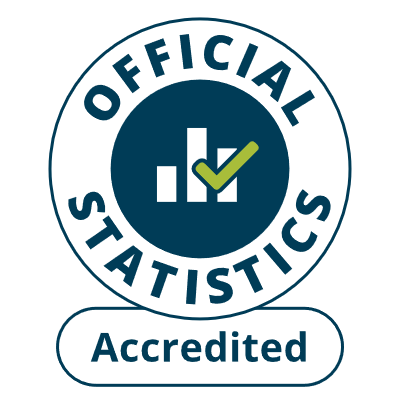
 Percentage of dwellings which are free from hazards
Percentage of dwellings which are free from hazards
Percentage of dwellings which are free from Category 1 Housing Health and Safety Rating Systems (HHSRS) hazards
None
|
||||||||||||||||||||||||||||||||||||||||||||||||||||||||||||||||||||||||||||||||||||||||||||||||||||||||
Metadata
- High level information
- Summary information
- Weblinks
- Statistical quality information
- Keywords
- Open Data
Title
Energy performance and the presence of hazards in dwellingsLast update
February 2019Next update
UnknownPublishing organisation
Welsh GovernmentSource 1
Welsh Housing Conditions Survey 2017-18Contact email
stats.housingconditions@gov.walesDesignation
National StatisticsLowest level of geographical disaggregation
WalesGeographical coverage
WalesLanguages covered
English and WelshData licensing
You may use and re-use this data free of charge in any format or medium, under the terms of the Open Government License - see http://www.nationalarchives.gov.uk/doc/open-government-licenceGeneral description
The Welsh Housing Conditions Survey (WHCS) collects information about the condition and energy efficiency of all types of housing in Wales. These are the first set of housing conditions results for Wales since the last survey in 2008.Key data gathered in the WHCS includes information about energy efficiency, cost of repair, the Welsh Housing Quality Standard (WHQS), fuel poverty and the Housing Health and Safety Rating System (HHSRS). For full details of the topics included in the survey please see the survey form, available on the WHCS website.
Data from the WHCS underpin two of the 46 National Well-being Indicators for Wales, specifically homes free from hazards (Indicator 31) and homes with adequate energy efficiency (Indicator 33).
For further information, please see Weblinks.
Data collection and calculation
WHCS fieldwork ran from August 2017 to April 2018. Property inspections were carried out by qualified surveyors, who performed visual assessments of the interior and exterior of properties. For full details of the topics included in the survey please see the survey form, available on the WHCS website.A sample of addresses was drawn from eligible households taking part in the National Survey for Wales 2017-18. A total of 2,549 full WHCS surveys were achieved across the 22 local authorities in Wales, which enables national level estimates.
Like any figures based on a survey, these results are subject to margins of error. The margins of error (“confidence intervals”) are shown for each result. These give a range within which the true value is likely to fall.
The results of the WHCS are weighted to compensate for unequal selection probabilities and differential non-response (e.g. to ensure that the tenure distribution of the final dataset matches that of the Welsh population).
Energy efficiency of dwellings:
The Standard Assessment Procedure (SAP) is the methodology used by the Government to assess and compare the energy and environmental performance of dwellings.
SAP works by assessing how much energy a dwelling will consume, when delivering a defined level of comfort and service provision. The assessment is based on standardised assumptions for occupancy and behaviour. This enables a like-for-like comparison of dwelling performance. The ratings are expressed on a scale between 1 and 100, where 100 represents no energy cost.
The ‘SAP 2012’ methodology was used in the Welsh Housing Conditions Survey 2017-18. (see the Glossary on the WHCS webpage.)
Housing Health and Safety Rating System:
The Housing Health and Safety Rating System (HHSRS) is a risk-based evaluation tool to help local authorities identify and protect against potential risks, and hazards, to health and safety from any deficiencies identified in dwellings. It is used to determine whether residential premises are safe to live in, or whether a hazard exists that may cause harm to the health and safety of a potential occupant.
The System assesses 29 types of housing hazard and provides a rating for each one. Those which score high on the scale (and are therefore the greatest risk) are called category 1 hazards – if, after a local authority inspection, a dwelling contains a category 1 hazard the local authority has a duty to take the appropriate enforcement action. Those that fall lower down the scale and pose a lesser risk are called category 2 hazards – when these occur the local authority may take enforcement action.
Full details of the measurement and modelling of these hazards can be found in the WHCS Technical Report on the WHCS webpage. Detailed analysis of the WHCS assessment of HHSRS is planned for publication in early 2019.
For further information, please see the statistical first release and supporting documents. Please see the National Indicators for Wales technical document for information relating to the national indicators. These can be found under Weblinks.
Frequency of publication
Every five yearsData reference periods
2017-18Users, uses and context
Please find this information in the related statistical publication, as per the given weblink.Rounding applied
NoneRevisions information
NoneWeblinks
Welsh Housing Conditions Surveyhttps://gov.wales/statistics-and-research/welsh-housing-conditions-survey/?skip=1&lang=en
National Survey for Wales
https://gov.wales/statistics-and-research/national-survey/?lang=en
National Well-being Indicators
https://gov.wales/statistics-and-research/well-being-wales/?tab=data&lang=en






 Percentage of dwellings
Percentage of dwellings